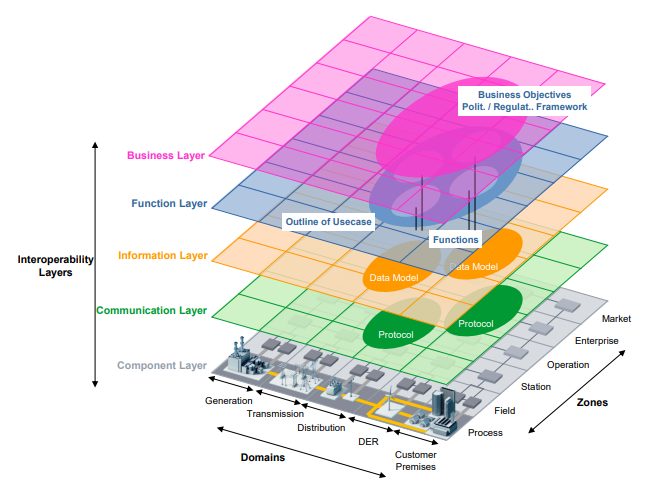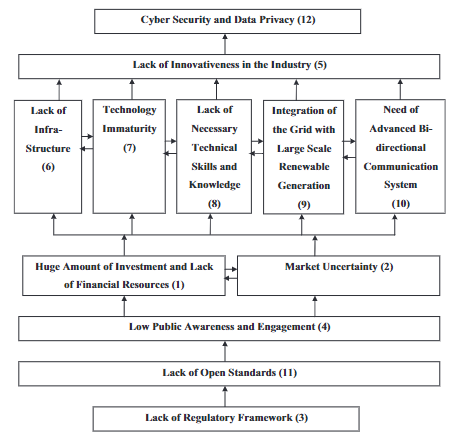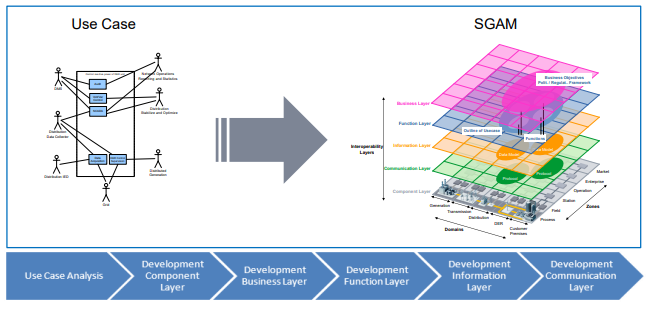Smart grid is the concept that describes the evolution of power systems to integrate and utilise techniques to adjust the flow of power to optimise the match between electricity supply and demand. The term "smart grids" is used to define the integration of new technologies and methods, often data-driven, in existing power system infrastructure. Sensing infrastructure, smart metering, information and communication technologies (ICT), such as sensing devices and smart metering; techniques such as novel optimisation methods and control architecture for managing power flow, energy management systems, load aggregation techniques; and new business model and end-user participation schemes - all these technical concepts fall within the field of Smart Grids. Therefore, such a broad field offers many different opportunities and solutions for various challenges with electricity generation, transmission, distribution, and consumption. According to (1), such challenges can be classified in terms of their domains - the actors involved and main stakeholders, in zones, and their interoperability layers with several cross-cutting issues.

The SGAM framework and the different domains, zones, and layers that compose smart grid solutions (1)
In the context of smart city solutions, a smart power grid is mostly related to the:
- efficient integration of clean and renewable energy generation and energy storage systems;
- efficient consumption of electricity;
- reliable availability of electricity supply and grid operations;
- effective business models that incentivise active participation of new market players, such as aggregators, energy companies, or citizens in demand response and flexibility provision;
- safe, reliable, efficient, and secure management of data related to critical infrastructure (2, 3, 4).
The European Union has invested heavily on the research and development of smart grid technologies, with approximately €1 billion invested in research in smart grids and energy technologies in the Horizon 2020 and Horizon Europe programmes (5). Smart grid solutions are key enablers for the transformation of the European energy system towards decarbonisation and resilience, and thus are listed as one of the priorities of the European Green Deal (6).
The plans of the REPowerEU actions (7) strive to bring the total renewable energy generation capacity installed in europe to 1236 GW by 2030, a measure that is only feasible with the implementation of distributed generation actions supported by smart grid technologies. Specifically, the EU Solar Energy Strategy (8) aims at increasing the installed capacity of solar photovoltaic in 2030 to twice the levels found in 2023. Such rapid increase in the integration of distributed generation is bound to cause grid congestion and power quality issues, mitigated by smart grid technologies.
An important sub-field of smart grids is on the design and operation of microgrids and energy communities, a particularly relevant concept in the context of smart cities and buildings (9). Microgrids are local electricity grids that can operate either independently (off-grid, or islanded mode) or connected to larger smart grids. Microgrids can range from district-level to individual building-level (nano-grids). The concept of microgrids support the implementation of wider smart grid concepts in smaller locations by reducing the scope and costs of implementation projects (10).
The main purpose of this document is to provide knowledge, information and a reference for the decision makers, city authorities, utilities, planners and building professionals to consider the suitable use cases and the potential implementation of smart grid solutions to support smart buildings and cities.

Overview of the Smart Grid Architecture (11)


Comments ()